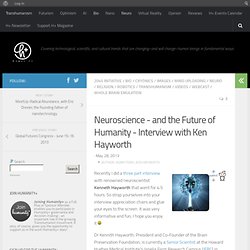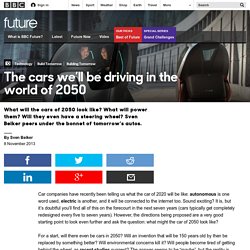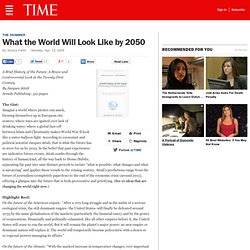

Post-2015 development: timeline. Neuroscience – and the Future of Humanity – Interview with Ken Hayworth - Recently I did a three part interview with renowned neuroscientist Kenneth Hayworth that went for 4.5 hours.

So strap yourselves into your interview appreciation chairs and glue your eyes to the screen. It was very informative and fun, I hope you enjoy it Dr Kennith Hayworth, President and Co-Founder of the Brain Preservation Foundation, is currently a Senior Scientist at the Howard Hughes Medical Institute’s Janelia Farm Research Campus (JFRC) in Ashburn, Virginia.
JFRC is perhaps the leading research institution in the field of connectomics in the United States. At JFRC, Hayworth is currently researching ways to extend Focused Ion Beam Scanning Electron Microscopy (FIBSEM) imaging of brain tissue to encompass much larger volumes than are currently possible. "Can the standard chemical fixation and plastic embedding technique used for electron microscopic investigation of brain circuitry be adapted to preserve the synaptic connectivity of an entire human brain? " 1. 2. 3. 4. Image Result for. Image Result for. Image Result for. The cars we’ll be driving in the world of 2050. Car companies have recently been telling us what the car of 2020 will be like: autonomous is one word used, electric is another, and it will be connected to the internet too.

Sound exciting? It is, but it’s doubtful you’ll find all of this on the forecourt in the next seven years (cars typically get completely redesigned every five to seven years). However, the directions being proposed are a very good starting point to look even further and ask the question: what might the car of 2050 look like? For a start, will there even be cars in 2050? Will an invention that will be 150 years old by then be replaced by something better? But we must also acknowledge this form of mobility comes at a premium, as polar ice melts, megacities become suffocated by smog and congestion, resources dwindle, and around 1.2 million people get killed in traffic accidents globally every year.
World Business Council for Sustainable Development. The Vision 2050 report lays out a pathway leading to a global population of some 9 billion people living well, within the resource limits of the planet by 2050.

This work results from an 18-month combined effort with CEOs and experts, and dialogues with over 200 companies and external stakeholders in some 20 countries. The report spells out the “must haves” – the things that must happen over the coming decade to make a sustainable planetary society possible. These include incorporating the costs of externalities, starting with carbon, ecosystem services and water, into the structure of the marketplace; doubling agricultural output without increasing the amount of land or water used ; halting deforestation and increasing yields from planted forests: halving carbon emissions worldwide (based on 2005 levels) by 2050 through a shift to low-carbon energy systems and improved demand-side energy efficiency, and providing universal access to low-carbon mobility.
The World in 2050. Futurology: Imagining the world in 2050. What the World Will Look Like by 2050. A Brief History of the Future: A Brave and Controversial Look at the Twenty-First Century By Jacques Attali Arcade Publishing; 312 pages The Gist: Imagine a world where pirates run amok, blowing themselves up in European city centers; where wars are ignited over lack of drinking water; where a global face-off between Islam and Christianity makes World War II look like a water-balloon fight.

According to economist and political scientist Jacques Attali, that is what the future has in store for us by 2025. In the belief that past experiences are indicative future events, Attali combs through the history of human kind, all the way back to Homo Habilis, separating the past into nine distinct periods to isolate "what is possible, what changes and what is unvarying" and applies those trends to the coming century. Where Will We Be in 2050? – Scenario I: A World in Ruins. Future Rainfall Predictions Climate Change. Humanity is at a crossroads The world of 2050 is a world of contrasts and paradoxes.

On the one hand, science and technology have continued to advance in response to emerging crises, challenges and opportunities. This has created radical transformations in genetics, nanotechnology, biotechnology and related fields. World in 2050 - pwc-world-in-2050-report-january-2013.pdf. These Economies Will Dominate The World In 2050. Economists on Wall Street are out with their recommendations for 2012.

A few have come out with calls for 2015. But one, HSBC, is out with a call for 2050. "The World in 2050," a new report by HSBC economist Karen Ward, forecasts the economic prowess of the 100 largest economies. Of interest in her report is where each happens to fall, and how income per capita will grow in a number of emerging markets. Key notes we've already taken away: Italy will no longer be in the top ten and the U.S., as you've likely guessed, is no longer number one. Millennium development goals: big ideas, broken promises? - interactive. The Millennium Development Goals Big ideas, broken promises? Are we nearly there yet? 2013 millennium development goal progress index – get the data. Thirty sub-Saharan African countries appear to have accelerated progress towards meeting the millennium development goals (MDGs) over the past three years, according to analysis from anti-poverty group ONE, which aims to up-end perceptions of the region as wholly off track.

Rwanda, Ethiopia, Malawi, Ghana and Uganda are among sub-Saharan Africa's top performers in this year's MDG progress index, released on Wednesday as part of ONE's flagship Data report. The index, developed by ONE's global policy director Ben Leo while he was at the Center for Global Development thinktank, compares countries' observed progress on eight MDG indicators with estimates of what would be required for them to achieve the targets.
Countries are allocated scores on each target (1 for on track, 0.5 for partially on track and 0 for off track), which are added to get a total score. A total score of 8.0 means a country is on track to meet all the targets in the index. Key findings from the 2013 index include: Russian2013.pdf. National_Footprint_Accounts_2012_Edition_Report.pdf. Looking Back on the Limits of Growth. Revisiting The Limits to Growth: Could The Club of Rome Have Been Correct, After All? Printable Revisiting The Limits to Growth: Could The Club of Rome Have Been Correct, After All?

An Energy White Paper by Matthew R. Simmons October 2000 THE PRICE OF PROGRESS When each of us as an individual decides to buy something, we first consider the price. In the early 1970's, a book was published entitled, The Limits To Growth, a report of the Club of Rome's project on the predicament of mankind. Over the past few years, I have heard various energy economists lambast this "erroneous" work done. The critics of this flawed work still relish in pointing out how wrong this theory turned out to be. This past May, Rice University's Baker Institute held an energy forum entitled "Running on Empty?
" For a publication that is almost 30 years out of print, it is fascinating that anyone still even remembers what the book said. As I was leaving the hotel where the program was held, someone approached me and said, "I listened to your talk! " I knew then that my message had been totally missed. Revisiting The Limits to Growth: Could The Club of Rome Have Been Correct, After All?